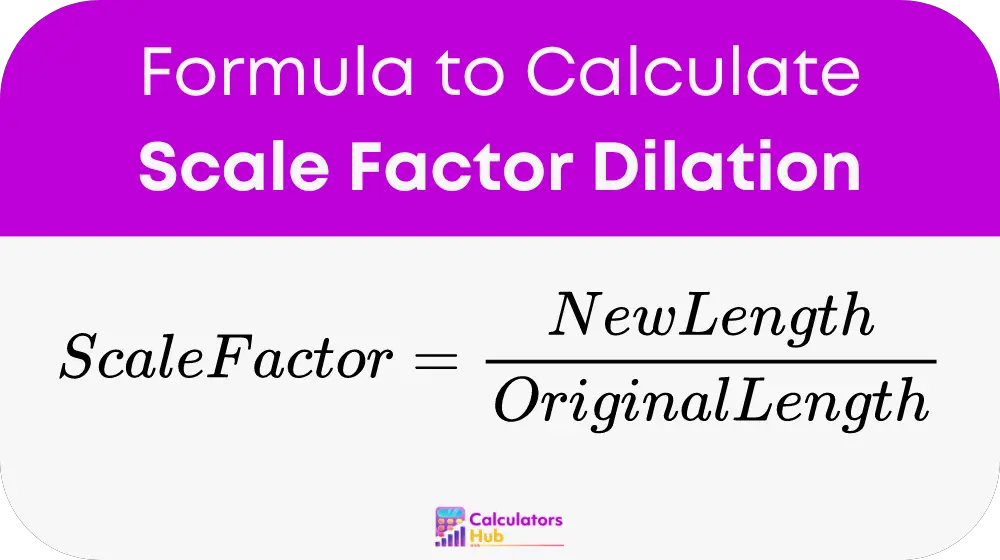The Scale Factor Dilation Calculator is a tool designed to compute the scale factor between two similar figures, indicating how much one figure is enlarged or reduced compared to another. This calculator is particularly useful in fields such as architecture, graphic design, and engineering, where precise scaling is necessary.
Formula of Scale Factor Dilation Calculator
To calculate the scale factor dilation, use the following simple formula:

Steps to Calculate Scale Factor Dilation
- Measure the original length of the object.
- Measure the new length of the object after dilation.
- Divide the new length by the original length.
- The result is the scale factor.
Important Points
- If the scale factor is greater than 1, the object is enlarged.
- If the scale factor is less than 1, the object is reduced.
- A scale factor of 1 means the object remains the same size.
Table of General Terms and Relevant Conversions
Here's a handy table to help you understand common terms and perform necessary conversions quickly:
| Term | Definition | Example |
|---|---|---|
| Dilation | Transformation that changes size of figures | Scale by factor of 2 |
| Scale Factor | Ratio of new size to original size | 0.5 for reduction |
| Enlargement | Increase in dimensions | Scale factor > 1 |
| Reduction | Decrease in dimensions | Scale factor < 1 |
Example of Scale Factor Dilation Calculator
Imagine you have a rectangle with a length of 4 cm, and you need to enlarge it to a length of 10 cm. Using our scale factor formula:
Scale Factor = 10 cm / 4 cm = 2.5
This means the rectangle’s size is increased by a factor of 2.5.
Most Common FAQs
A1: Yes, scale factors can be decimals, indicating a reduction in size.
A2: Absolutely, scale factors apply to all dimensions, including 3D shapes.
A3: To find the original size, divide the current size by the scale factor.